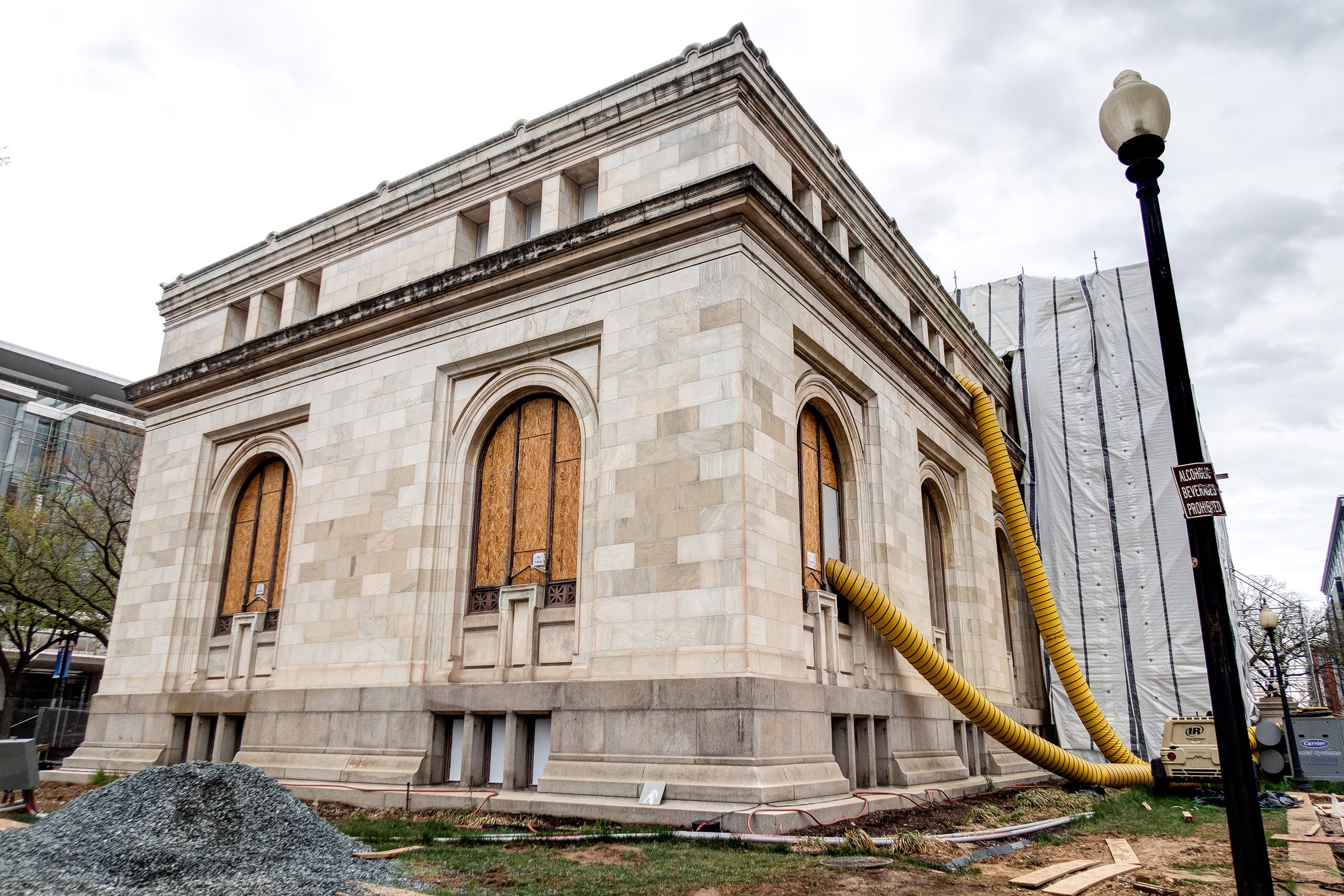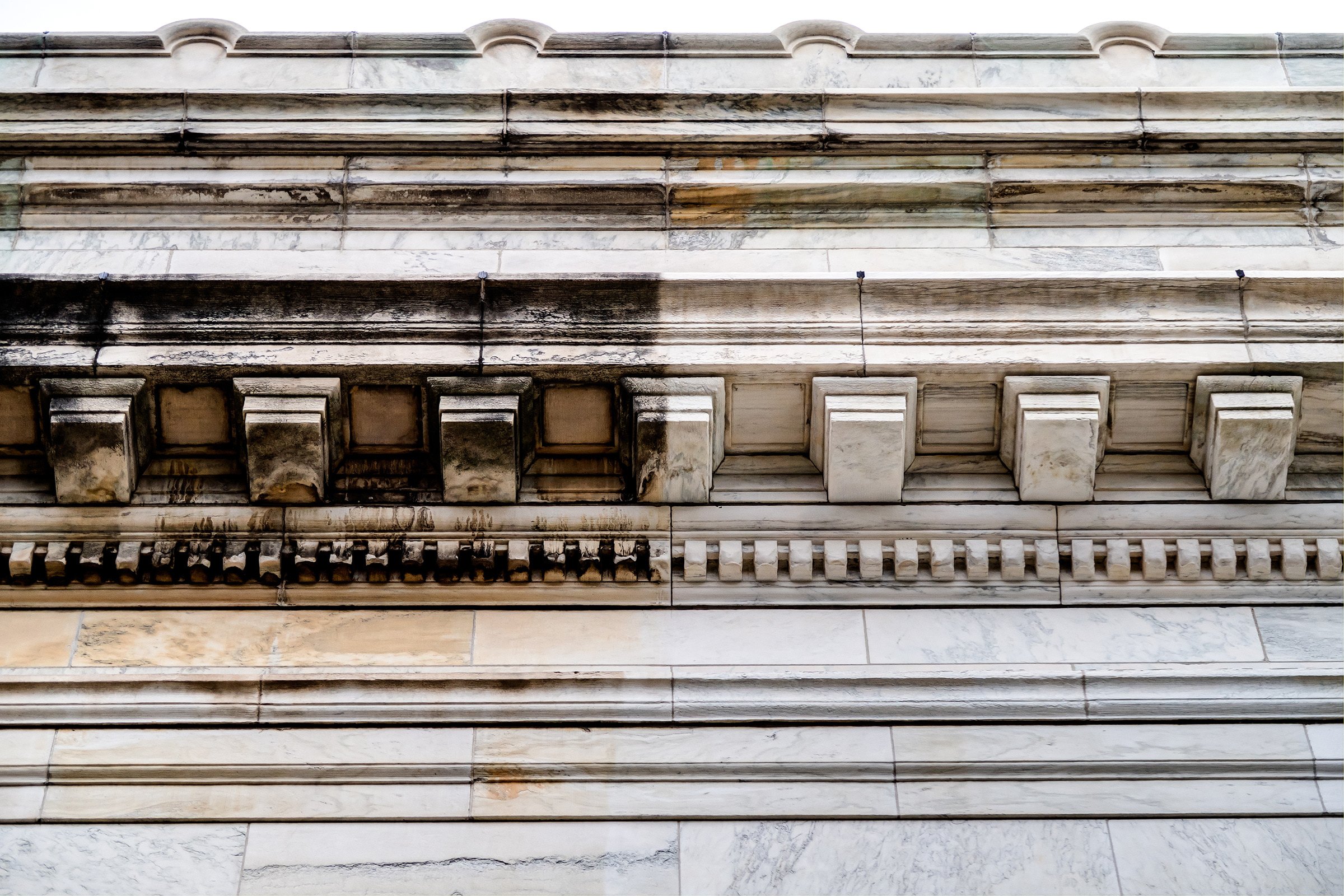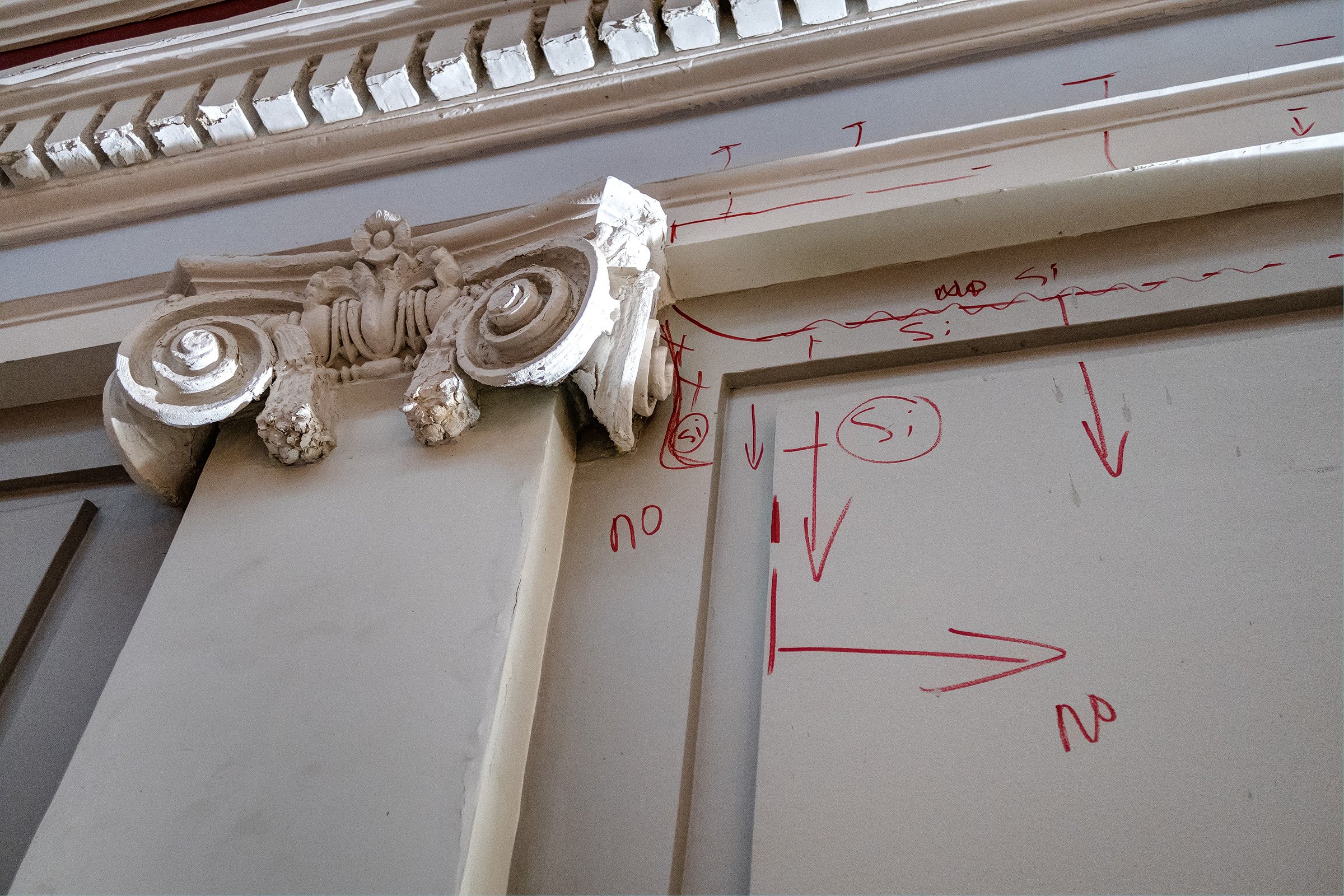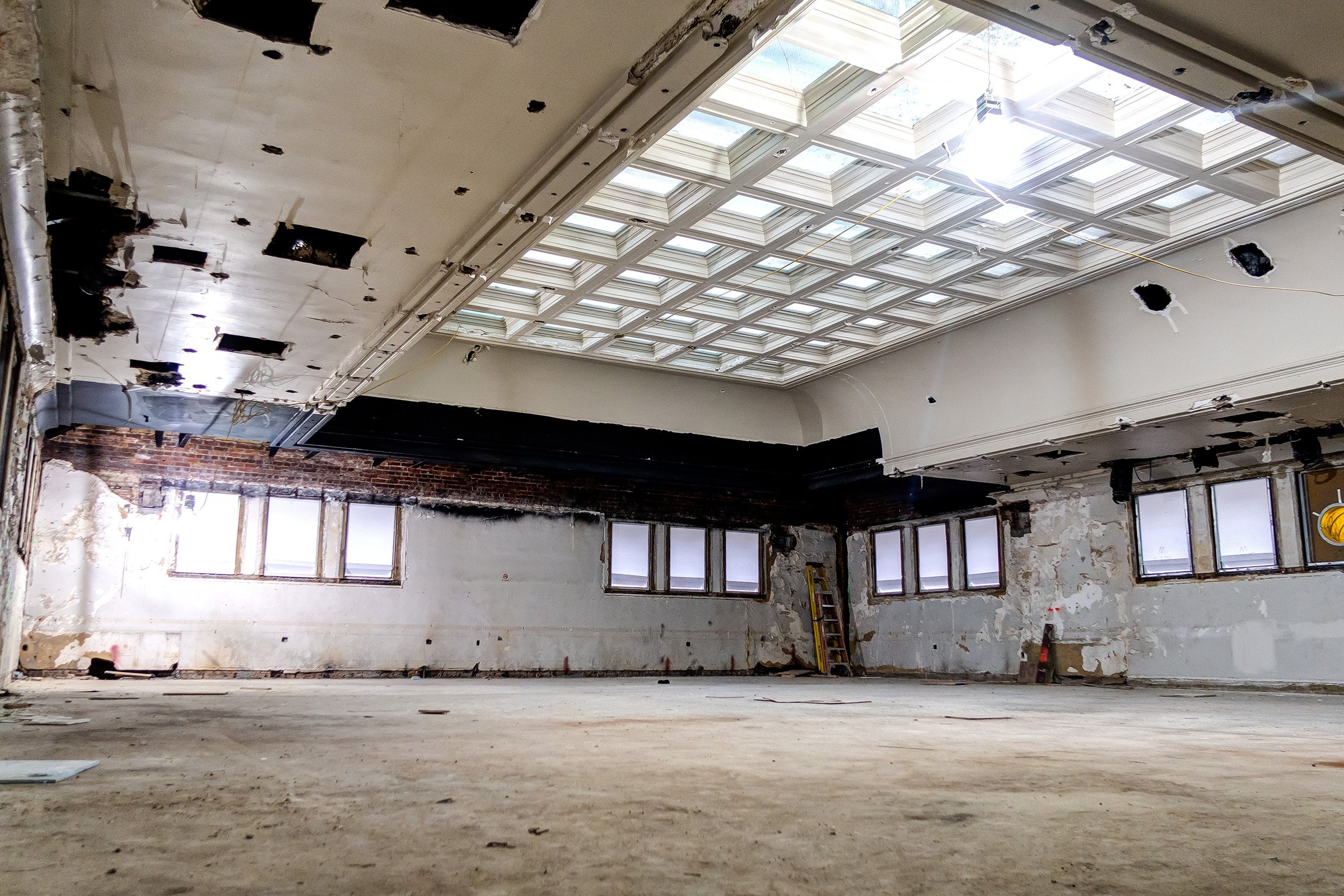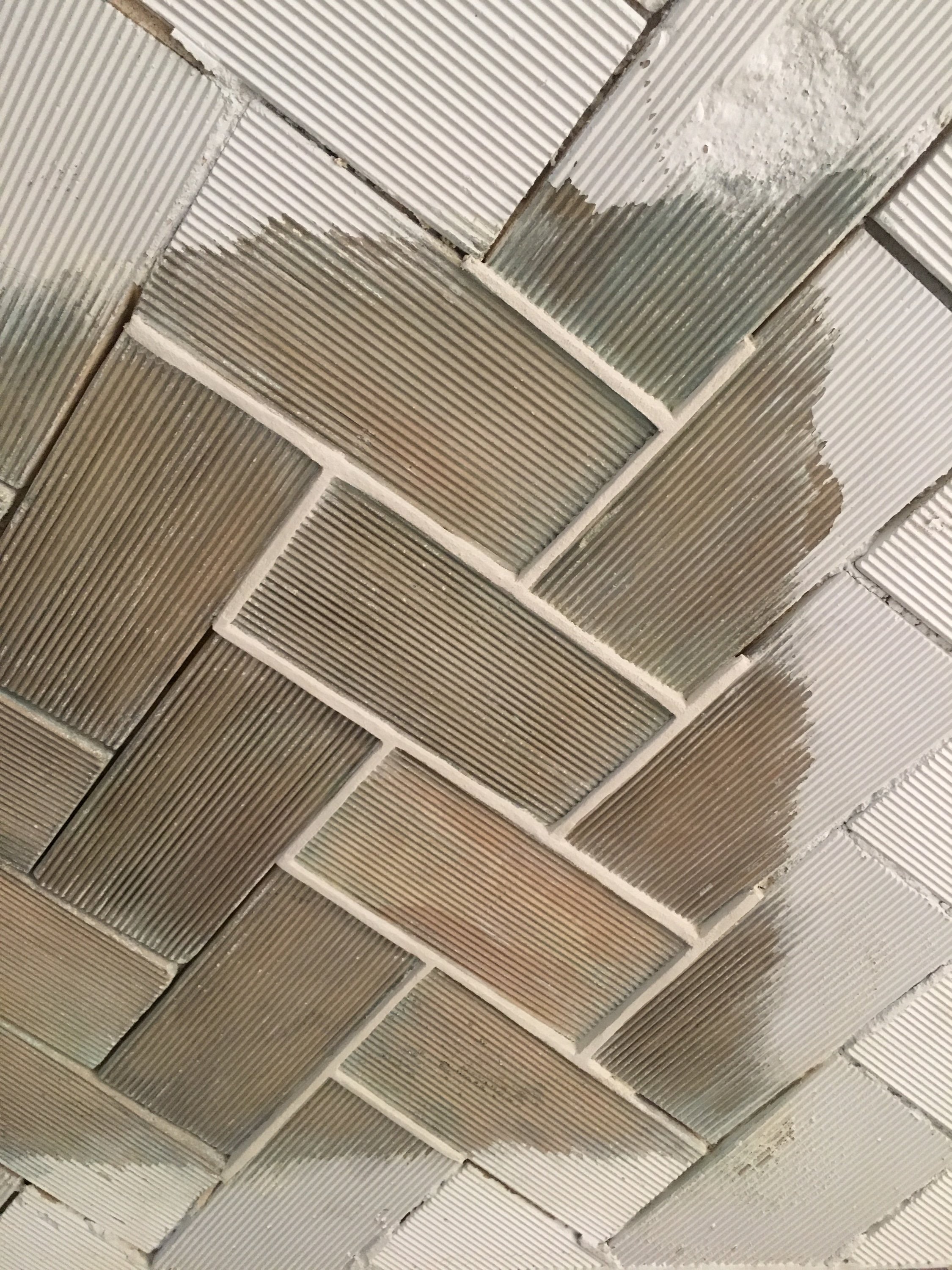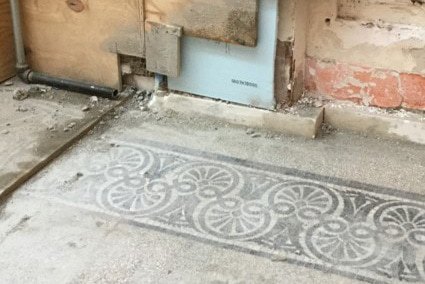The Carnegie Library on Mount Vernon Square, one of the city’s most stunning buildings and expressions of civic pride, opened in 1903 as a gift from American philanthropist Andrew Carnegie. The visionary adaptive reuse project included a complete restoration of the exterior Vermont marble and Milford granite facade; restoration of the historic windows; restoration of the historic light well in the central atrium; restoration of the historic reading rooms, including ceiling, windows, and pilasters; and the return of historic detailing, restoration of the grand staircase, and restoration of the Guastavino ceiling in the basement.
Carnegie Library
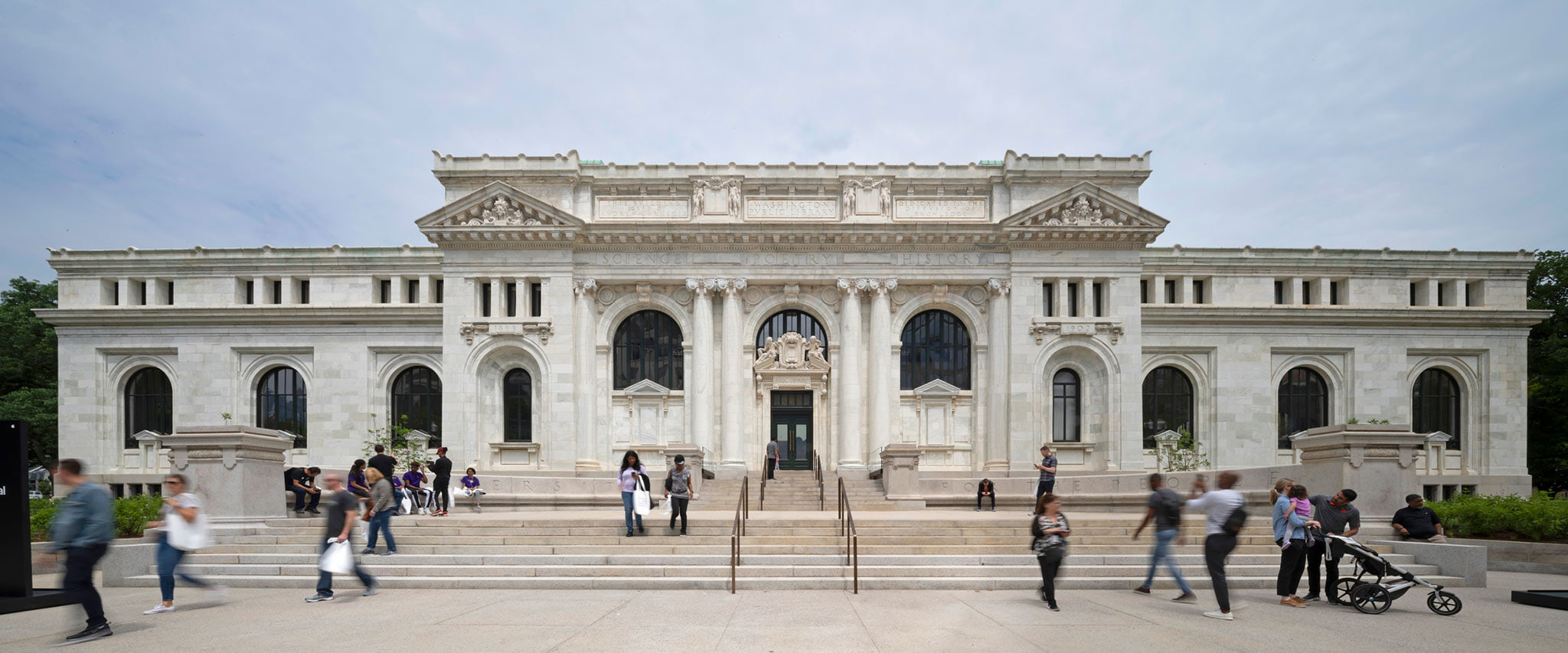

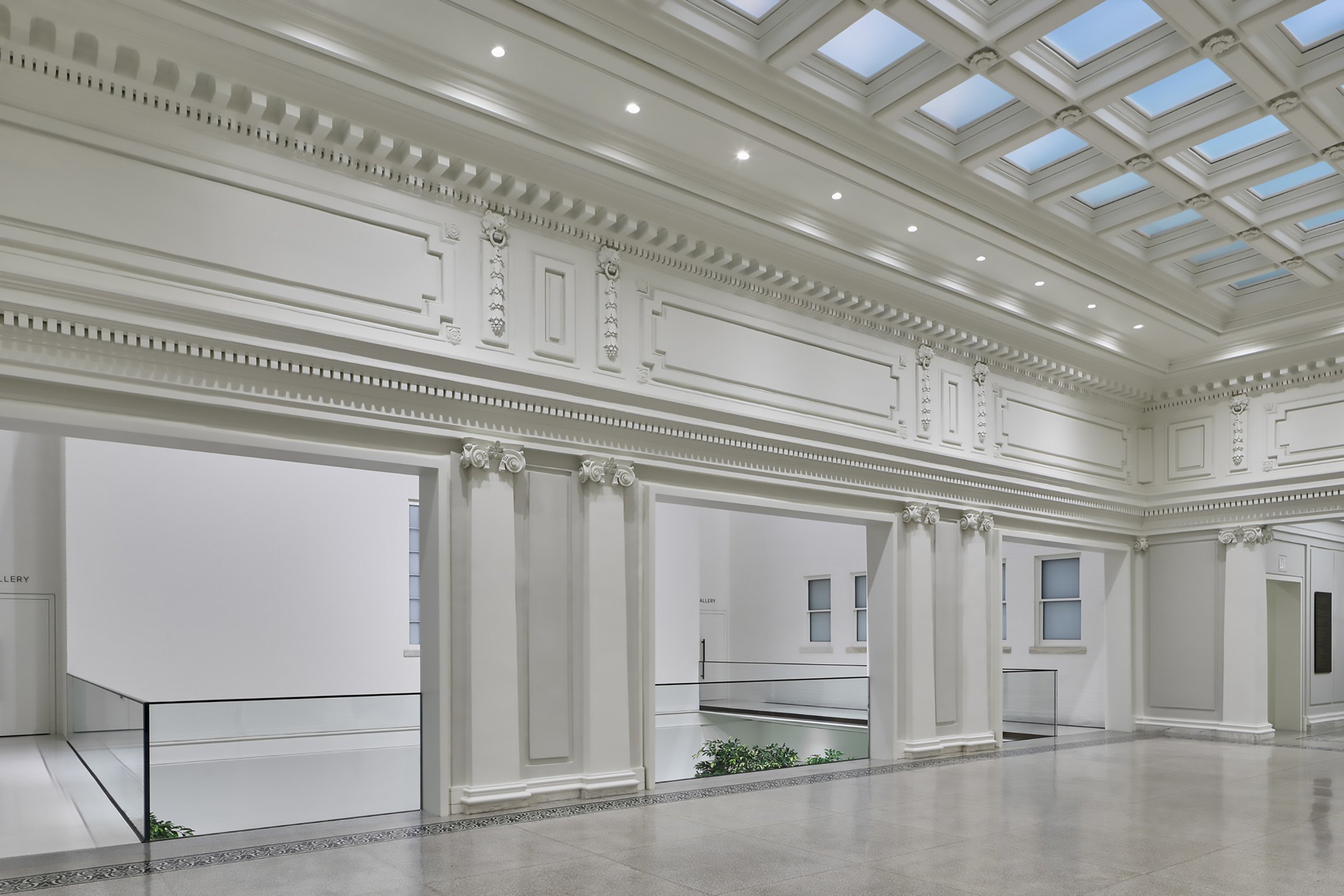


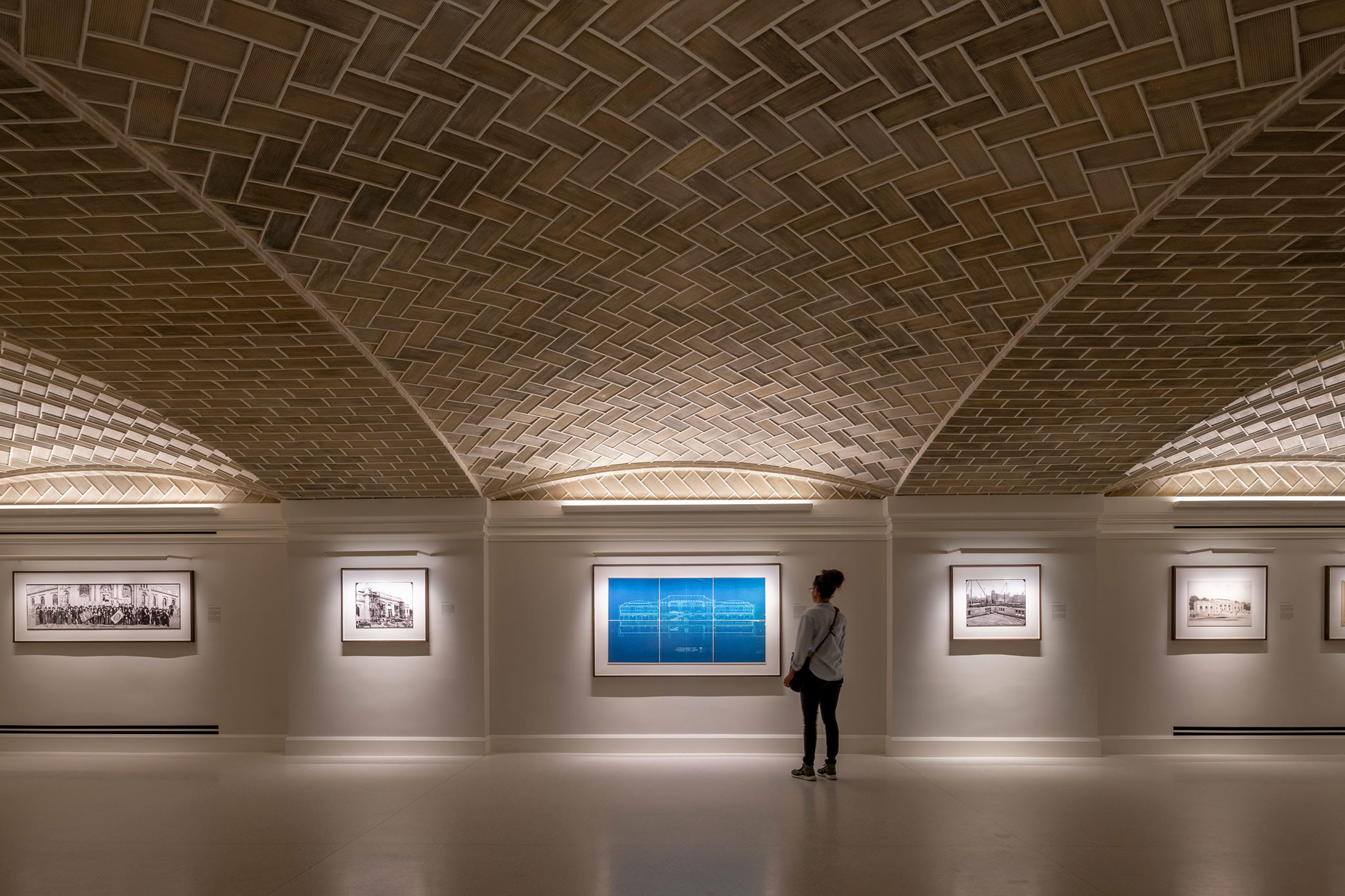
The preservation strategy relied on identifying hidden chases, shafts, and vertical pathways to invisibly add new building systems and lighting, carefully integrating contemporary features into the historic building fabric. BBB coordinated and documented the removal of loadbearing masonry walls and non-original floor slabs to transform the cloistered library into an open and engaging space, welcoming visitors to experience the next century of learning. The weathered condition of the architectural details was respected and left intact; however, deteriorated sculptural elements on the main facade were consolidated and minimally restored using Dutchman and mortar patching repairs where appropriate. The original wood windows were restored and retrofitted with new energy-efficient glazing.






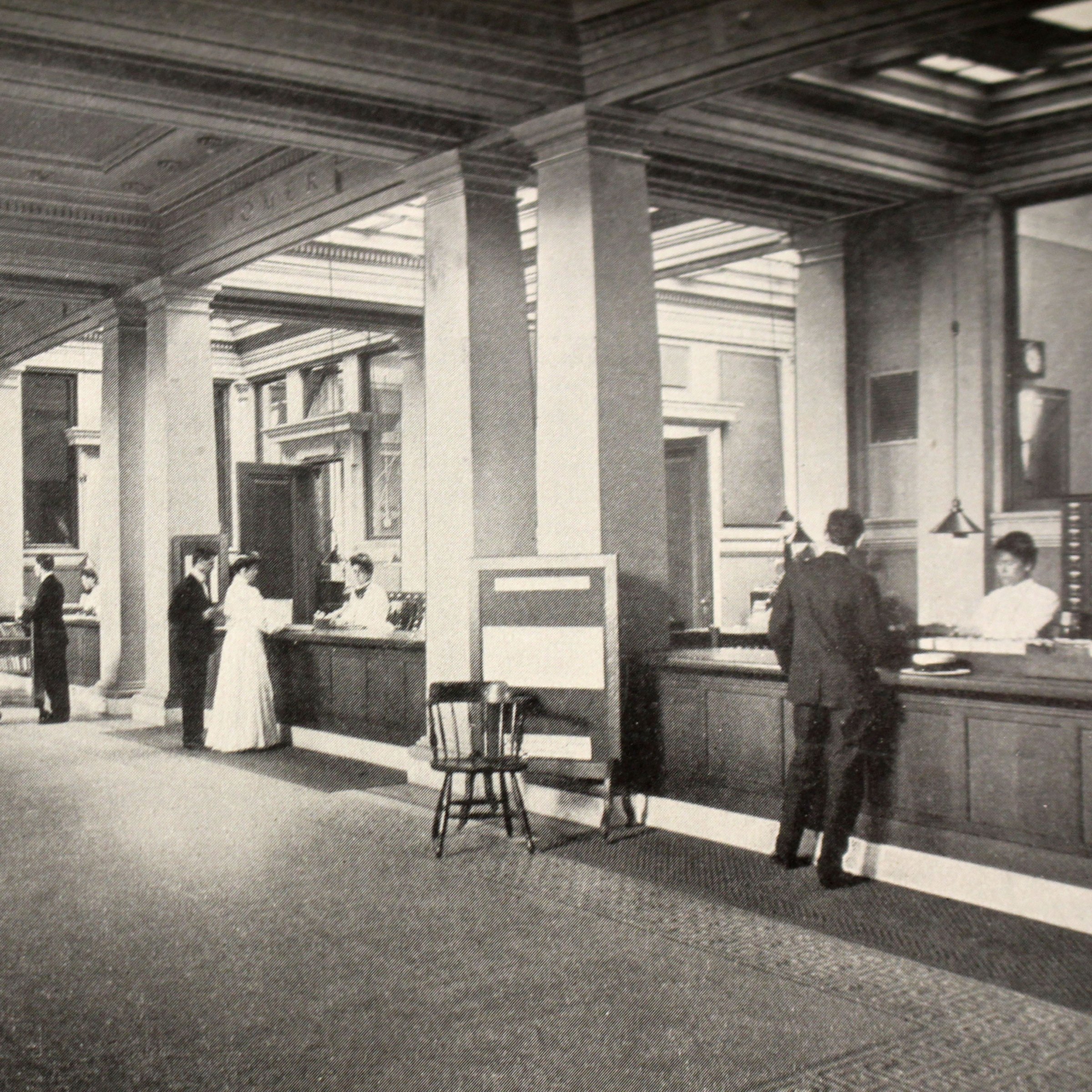

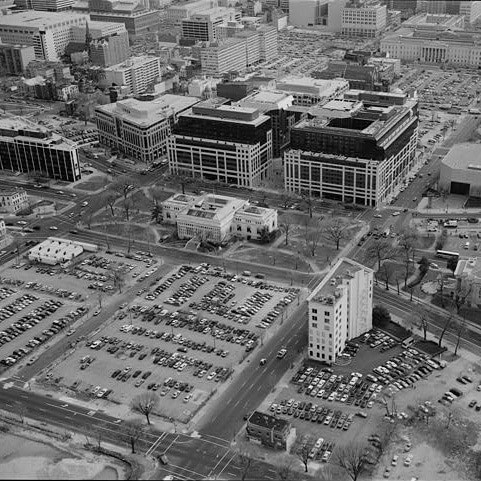

A newly imagined entry staircase on the north facade provides a welcoming portal to the convention center and Shaw District beyond. The project also included new site walkways and a south plaza—making the building accessible from the south for the first time—as well as new landscaping, the incorporation of bioretention beds, and new facade lighting.

Project Credits
Jill S. Cavanaugh
Jennie Gwin
Caroline VanAcker
